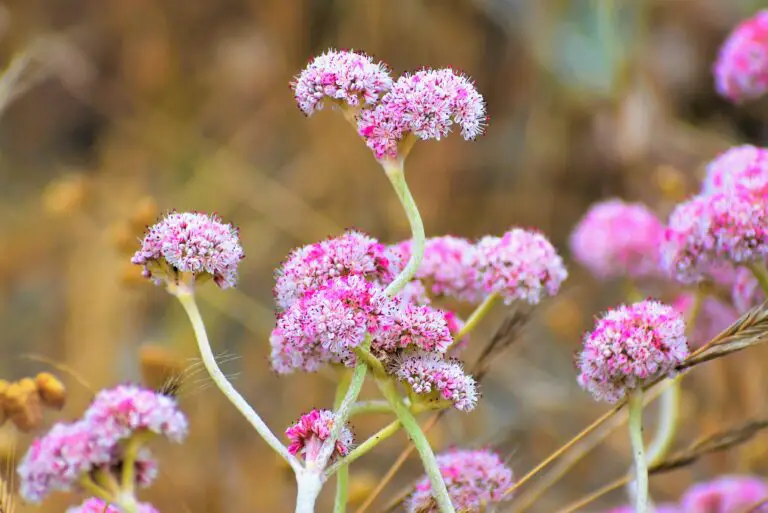Introduction to Sedum and Their Growth Dynamics
Welcome to the vibrant world of Sedum, nature’s resilient tapestry of beauty—they’re not just succulents, they’re survivors! These hardy champs have mastered the art of thriving where others merely try to survive. Imagine a tiny Sedum shoot, perched on a rocky crag, gleaming under the relentless sun, unfazed by the aridity that would make other plants wave the white flag. It’s not science fiction; it’s the daily saga of the sedum. What’s their secret, you ask? Let’s dive into the innate resilience and propagation savvy that encapsulates their world!
Let’s paint a picture: Picture your garden as a grand stage, and each plant is an actor. In comes Sedum, the understated ensemble member who’s poised for a breakout role. You see, Sedum don’t just huddle in a cozy pot—they claim territory. How do they do it? Through a symphony of growth tactics that make them champions of spreadability. They don’t need a green thumb’s coaxing; they’re the Ronin of the plant realm—masters without a master. Each leaf that falls does not mark an end but signifies a new beginning, a fresh Sedum ready to root and rise.

Now, imagine these verdant wonders in a real-life setting. Picture a rugged, sun-scorched hillside that’s the stuff of westerns, seemingly inhospitable. Yet amidst this, you spot a splash of green—Sedum, holding fort, speckling the landscape with verdancy. They aren’t just enduring; they’re staging a silent takeover, one leaf at a time. Sedum plants personify the ‘grow where you’re planted’ aphorism, exemplifying nature’s magnificent adaptability. Their scattered leaves become their progeny, finding new soil, new homes, ultimately transforming the terrain under their gentle conquest.
Adaptations? They’ve got a treasure trove! Their leaves are storage units, holding onto water with a miser’s grip, ensuring survival even when rain is a distant memory. And their roots? They’re not deep or demanding; instead, they sprawl horizontally, unearthing life in the shallowest of soils. It’s a hum of efficiency, a testament to evolution’s ingenuity, the very essence of how sedum spread. In the story of life, Sedum are the unsung heroes, the plants that thrive without the stage lights, spreading hope with every new sprout.
So as we delve deeper into the secret lives of Sedum, remember these unsung pioneers, reminding us that sometimes, the most extraordinary narratives are hidden in the humblest of characters. As they flourish and extend their reach across rockeries, garden beds, and even rooftop gardens, we witness the unstoppable force that is Sedum—nature’s triumph in miniature. Stay tuned to unfold the mysteries behind how these seemingly demure plants paint the world in strokes of tenacity and life.
“`html
Understanding Sedum Propagation: The Basics
Have you ever wondered how the resilient sedum plant thrives in your garden, spreading its joy throughout the landscape? Let’s dig into the secrets of sedum propagation, a process that’s as fascinating as it is essential for these succulent beauties to flourish.
Sedum plants, with their plump leaves and sturdy stems, are not only a gardener’s delight but also propagation prodigies. Vegetative propagation is their go-to method, where the plants multiply by simply breaking off a piece and letting it take root elsewhere. Imagine a stem falling onto the soil, playing dead briefly, only to rise triumphantly as a new plant. It’s almost like a botanical version of the phoenix rising from the ashes!
But that’s not all; seed dispersal plays a crucial role too. Sedum seeds are the tiny, adventurous offspring of the plant world, hitching rides with the wind, water, or passing wildlife to find a new place to call home. Picture a seed journeying far and wide, braving the elements, to finally settle down in a cozy nook of soil – it’s the ultimate plant pilgrimage!
For those with a green thumb, or even just a sprinkle of plant curiosity, you can witness this miraculous process firsthand. A leaf or stem cutting snipped from your favorite sedum can spread joy in a new container or garden corner. Why not watch a helpful tutorial on different sedum propagation techniques to get started? And who knows, your green haven could soon become a sanctuary for these hardy gems, continually expanding and adding charm to your garden landscape.
“`
Sedum Propagation Methods for Gardeners
Have you ever marveled at the way Sedum, also known as stonecrop, can transform a garden with its lush tapestry of foliage? These charming succulents have a robust knack for spreading their joy across your floral havens. Let’s dive into the nitty-gritty of how to multiply these hardy beauties, and turn your garden into a Sedum sanctuary.
First up, let’s talk about leaf cuttings – a method as simple as it sounds. Imagine you’re an artist and each leaf is a potential masterpiece. Simply pluck a healthy leaf and lay it onto well-draining soil. Before you know it, tiny roots emerge, anchoring a future plantlet to life. Think of it as nature’s magic trick, turning one into many with a wave of the wand.

Moving on to stem cuttings, a technique that’s like giving your Sedum a haircut, only to see it grow back with friends. Snip a segment, let it callous over for a day or two, and plant. It won’t be long until fresh shoots spring up, eager to catch some sun.
Lastly, division – the tried-and-tested way to share the wealth. Every few years, your Sedum will be ready for a split. Gently pull apart the clumps, giving them their own space to flourish. It’s like giving your plant its own room after years of sharing a bunk bed with its siblings.
For those hungry for more knowledge on propagation, make sure to check out expert tips from World of Succulents. And if you’re after a broader range of gardening tips to nurture all your plant friends, we’ve got you covered too.
Embrace these techniques, and watch your garden burst into a celebration of Sedum glory. Now, go forth and propagate!
Caring for Your Sedum During the Propagation Process
Let’s talk about turning your sedum dreams into reality! Propagating these little green marvels is like baking a perfect cake—it’s all about the ingredients and the care you put into it. Whether you’re hoping your sedum spreads its joy in your outdoor space or you’re creating an indoor oasis, these tips will help you succeed.

Before you begin, choose a spot where your new sedum babies will thrive. Picture a cozy nook bathed in sunlight, their little leaves reaching upwards like morning yoga enthusiasts. Sedums love the sun, but just like us, they need their beauty sleep in the shade to avoid sunburn. A place that mimics the cool morning and fiery afternoon of their natural rocky habitats will have them whispering, “This is the life!”
Next up, let’s talk about the bed where your sedum will lay its roots. A light, airy, and well-draining soil stands at the top of their wishlist. Think of it as a five-star hotel for roots—somewhere they can relax, spread out, and soak up the good stuff without swimming in water. Overwatering is a big no-no; these succulents prefer a “sip, not a soak” approach—just enough water to quench their thirst.
Remember, planting sedum is like setting up a trust fund for your garden’s future. For an insider look on how they get their start in life, check out our guide on rooting sedum in water, and see how you can give them the best start possible. A little effort now means a lush, low-maintenance haven later. Sedum plants are masters of survival, but with your careful guidance, they won’t just survive—they’ll thrive!
Troubleshooting Common Sedum Propagation Issues
Oh, the joy of watching your sedum spread across the garden! But what happens when things don’t go as planned? Let’s put on our gardening gloves and dig into some common hurdles you might face while coaxing these succulent stars to multiply.

Imagine you’ve got your heart set on a carpet of sedums, only to find them sulking instead of spreading. It’s like inviting friends to a dance party, but no one’s got the groove. Why so shy, little plants? Fret not! It could be as simple as poor lighting—sedums are sun worshippers, and without enough light, they can become the wallflowers of the plant world. Ensure they’re basking in the right spot to get their party started!
Next up, let’s talk water—or the lack thereof. These succulents might love a good drought, but during propagation, they need consistent moisture to root properly. It’s like giving a baby plant a steady diet of encouragement. Too dry, and they’ll wither; too wet, and you’ll have a mushy mess on your hands. Strike that delicate balance, and you’ll see sedum babies popping up in no time.
Are your sedums spreading but looking more like a patchy quilt than a lush blanket? It could be a case of overcrowding. Like a bustling subway at rush hour, if there’s not enough room, growth grinds to a halt. Give each piece its personal space to avoid an underground tangle and encourage a seamless sedum spread.
The Cuttings Conundrum
Perhaps you’ve tried propagating from cuttings, but they just won’t root. It can feel like hosting a dinner party where the guests won’t eat. Are you cutting correctly? Remember, it’s not just snip-snip; choose healthy, non-flowering stems, and use clean, sharp tools to avoid infecting your future sedum stars.
Beware of timing too. Not every season is fit for propagation. Think of it like surfing—you want to catch the right wave. Spring and early summer offer the best tide of growth potential. Miss that window, and your cuttings might just paddle around aimlessly without rooting.
Lastly, patience is the unsung hero of plant propagation. Sedum can be a bit like teenagers—sometimes, they just need time to come into their own. Don’t rush them, and definitely don’t throw in the towel too early. With a keen eye on these common issues, you’ll find yourself a sedum-whisperer, fostering a garden full of flourishing succulents!
Design Ideas for Incorporating Spreading Sedums in Landscapes
Imagine an enchanting carpet of succulents undulating through your garden, the mesmerizing patterns of spreading sedums knitting together spaces with lush textures and vibrant hues. These hardy plants are not just survivors; they’re masterful conquerors, claiming every inch of soil with their resilient charm. If you’re looking to elevate your garden with these robust beauties, let’s delve into the world of spreading sedum and uncover imaginative designs to transform your green spaces.
Rock Gardens: Nature’s Artistry Unleashed
Envision a miniature alpine escape in your own backyard, where sedums cascade gracefully over rocky crevices, their succulent leaves glistening like jewels. A rock garden can become a stage for sedum’s natural ballet of growth, with each plant intuitively finding its niche among the stones. As sedums spread, they blanket the area, creating a living mosaic that’s as low-maintenance as it is stunning.
Green Roofs: Eco-Chic and Stylish Sustainability
Green roofs are more than just a trend; they’re a testament to sustainable living. And spreading sedums are the ideal candidates for this eco-friendly upgrade. Imagine your rooftop transformed into an Edenic sanctuary where sedums thrive, their water-storing prowess providing insulation and reducing stormwater runoff. Urban dwellers rejoice; this is your answer to creating a green haven in the concrete jungle.
Ground Cover Solutions: The Unsung Heroes of Gardens
Sedums as ground cover are the unsung heroes of the plant world, tirelessly working to prevent soil erosion, suppress weeds, and offer a foliage feast to the eyes. Picture a lush underplanting beneath a canopy of trees, with sedums dancing in the light filtering through the branches. These versatile plants are the perfect cohorts for gardeners looking to add both beauty and function to their outdoor domain.
Every gardener dreams of a landscape that’s not only a visual symphony but also one that sings the song of ease and harmony. With sedums, you’re gifting your garden the freedom to evolve, expand, and express itself in the most captivating ways. To draw inspiration from gardens thriving with sedum, let’s take a peek at a video showcasing some picturesque outdoor succulent garden ideas:
Whether you’re an avant-garde gardener or a novice nurturing your green thumb, these low-maintenance yet high-impact design ideas are your ticket to a transcendent garden experience. Let spreading sedums take the lead, and watch as they weave their serene magic across your landscape, making every corner a vibrant vignette of life’s perennial growth.
Sedum Species Showcase: The Most Prolific Spreaders
Welcome to the enchanting world of sedum, where each variant not only survives but thrives with a zest for life that’s truly remarkable! Sedums, known for their hardy nature and drought resistance, are a fascination for plant enthusiasts eager to witness the wonders of propagation. So buckle up, because we’re diving into a showcase of sedum species that are masters of multiplication!
Picture this: a sea of vibrant succulents, each spreading its own way, creating a tapestry of textures and colors. Well, imagine no more, because these sedum species are the real deal when it comes to quick and effortless propagation. Take Sedum sarmentosum, for instance, often dubbed the “stringy stonecrop.” This little green marvel just can’t help itself; it stretches its tendrils across the soil, daring new plants to take root and flourish.
Now, let’s not forget about Sedum reflexum, also known as “blue spruce stonecrop.” Its needle-like leaves and tendency to cascade over containers and walls make it perfect for creating a living mural in your very own garden. But how do they do it? Simply by bits and pieces of themselves falling off and, with a touch of soil and sun, starting new sedum stories. Want a little more insight into this fascinating process? Check out these expert techniques to jumpstart your own sedum story.
There’s also the Sedum album, or “white stonecrop,” that covers ground faster than you can say “sedum.” It’s a plant of many faces, using both seeds and offsets to relentlessly spread its joy. And let us not sidestep the charismatic Sedum morganianum, the “donkey’s tail,” whose plump, cascading stems are chock-full of propagation potential, just waiting for a chance to drop and roll into a new life.
Behold the magic in a simple leaf from the sedum family. Just when you thought it was down for the count, it springs back by sprouting miniature versions of itself. It’s like a plant version of a “Buy one get one free” deal, except with sedum, the cycle just keeps on giving.

In the ultimate act of botanical benevolence, these sedum variants don’t merely survive; they set the stage for future generations. This performance is not only captivating, but it’s also an open invitation for gardeners to play a part in the everlasting circle of sedum life. So, whether you’re an experienced green thumb or a curious onlooker, the propagation proficiencies of sedum species welcome you to a world where each plant tells a story of growth, resilience, and shared success.
Ecological Benefits of Planting Spreading Sedums
Every gardener’s dream plant, the hardy and vibrant sedum, might just be one of the earth’s friendly favorites. Imagine a carpet of green, peppered with star-shaped blossoms, embracing your garden space. But it’s not just about the visual treat; spreading sedums are ecological warriors in their own right. Let me dive into the myriad ways these succulent saviors contribute to our planet’s well-being.
First up, soil stabilization. Scenarios like erosion are no match for the spreading sedum brigade. Their root systems are designed for combat, anchoring the soil and reinforcing the ground beneath. Picture this: slopes prone to sliding, transformed into stable terrains, all thanks to the network of sedum roots. It’s like nature’s own geotextile.
Next, we must chat about the flying guests these plants attract. Pollinators, from bees to butterflies, flock to the sedum’s inviting blooms. In a world where these tiny but mighty creatures face threats, gardens full of sedums are like pit stops for them to refuel and thrive. Imagine a world buzzing with life, with sedums as the silent yet vital protagonists.
And let’s not forget the sedum’s role in ecosystem health. By implementing a planting strategy rich with spreading sedums, gardeners inadvertently create a microhabitat teeming with biodiversity. Tiny insects and microbes occupy the sedum’s universe, forming a complex and balanced ecosystem. It’s a live demonstration of nature’s intricate web, played out in your backyard.
Arriving at real-life examples, think of urban spaces, often concrete deserts, being revitalized with sedum green roofs. These are not just appealing to the eye but also act as lungs for the city, purifying the air and regulating temperature. Or consider the rural hillsides, where sedums help maintain the delicate soil, ensuring the picturesque landscapes remain unmarred by erosion.

It’s evident that spreading sedums are not just spreading their leaves; they’re spreading life, joy, and ecological balance. These plants might appear humble, but their contributions are nothing short of heroic. So, when you plant that next sedum, remember – you’re planting more than just a plant; you’re planting hope for the environment.
Frequently Asked Questions
Are you ready to dive into the world of sedum and discover just how these resilient plants thrive and multiply? Get your gardening gloves on – we’ve got some plant propagating to chat about!
What’s the best time for sedum propagation?
Timing is everything, and when it comes to propagating sedum, it’s like catching that perfect wave. Aim to start in the spring or early summer when growth is vigorous. Imagine sedum as eager youngsters, ready to leap into the next phase of life – that’s the energy you want for successful sedum propagation!

Could spreading sedums become problematic?
You might wonder, “If I let my sedums spread, will they take over my garden like some kind of green conqueror?” Well, sedums are indeed enthusiastic about their space, but with a little oversight, your garden can host a friendly sedum meet-up rather than a takeover. Keep them in check, and you’ll coexist just fine.
How can I manage the growth of my spreading sedum?
Managing sedum growth is like being the conductor of an orchestra – it’s all about striking the right balance. Regular pruning keeps the ensemble harmonious. Simply remove the sections that are outgrowing their welcome, and perhaps share them with fellow plant enthusiasts. Voilà, you’re not just a gardener, you’re a community plant hero!
Now that we’ve covered some hot topics about sedum propagation, don’t you feel a bit more like a green-thumbed wizard? You’re definitely on the way to becoming a master of the sedum domain. Stay curious, keep experimenting, and your garden will be a vibrant testament to your newfound wisdom!



